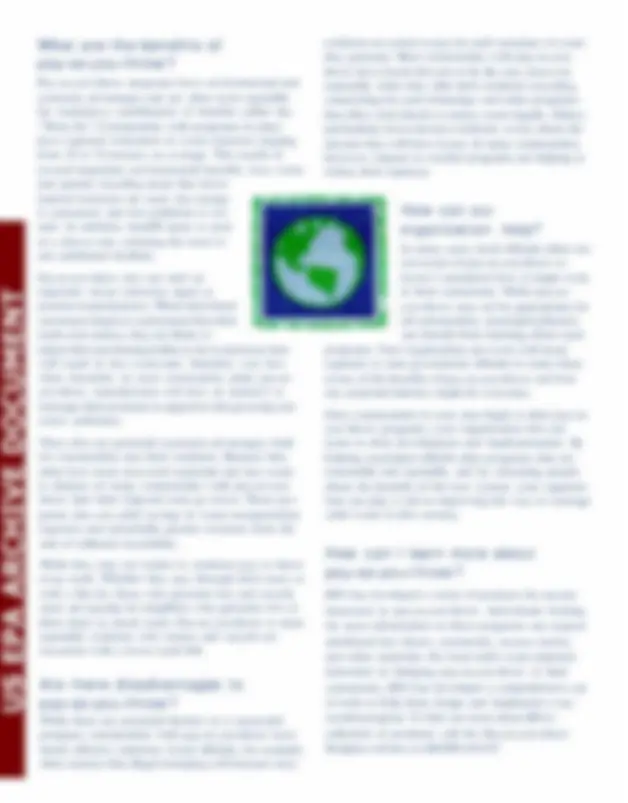



Study with the several resources on Docsity

Earn points by helping other students or get them with a premium plan


Prepare for your exams
Study with the several resources on Docsity

Earn points to download
Earn points by helping other students or get them with a premium plan
Community
Ask the community for help and clear up your study doubts
Discover the best universities in your country according to Docsity users
Free resources
Download our free guides on studying techniques, anxiety management strategies, and thesis advice from Docsity tutors
Pay-as-you-throw programs, also known as unit-based pricing, provide direct economic incentives for individuals to reduce waste and recycle more. These programs have been adopted by over 2,000 communities in the us, resulting in significant reductions in waste amounts and environmental benefits. By charging households based on the amount of waste they generate, pay-as-you-throw programs encourage source reduction and promote a more equitable waste management system.
Typology: Study notes
1 / 3

This page cannot be seen from the preview
Don't miss anything!


United States Environmental Protection Agency
Solid Waste and Emergency Response (5305W)
EPA530-F-97- April 1997
hen it comes to manag- ing solid waste, the goal for the past 10 years has been to reduce, reuse, and recycle. Today, thousands of community recycling programs are diverting millions of tons of valuable materials-materials
motivate residents not only to recycle more, but also to think of ways to prevent waste in the first place. They’re called “pay-as-you-throw” programs, and nearly 2,000 communi- ties across the country have begun using them.
that would otherwise be thrown
Pay-as-you-throw pro- grams, also known as unit-based or
Despite the tremendous growth in recycling, how- ever, waste-generation rates among individuals continue to rise. Most of us don’t give as much thought as we should to reducing the amount of waste that remains after recycling.
One reason for this is we usually have no incentive, beyond a general envi- ronmental concern, to reduce waste. Because individuals in most commu- nities pay for collection and disposal services through property taxes (or, in some cases, through a flat fee), they pay the same amount no matter how much they throw away.
There is a different type of program, however, that communities can use to
variable- rate pricing, provide direct economic incentives for people to reduce the amount of waste they generate. Households are charged for waste collection based on the amount of waste they throw away- in the same way they are charged for electricity, gas, and other utilities. In some communities, pay-as-you- throw is based on volume: residents are charged for each bag or can of waste they generate. A few communi- ties bill residents based on the weight of their trash. Either way, pay-as-you- throw gives everyone an extra push to prevent waste. Pay-as-you-throw connects our environmental concerns with our wallets.